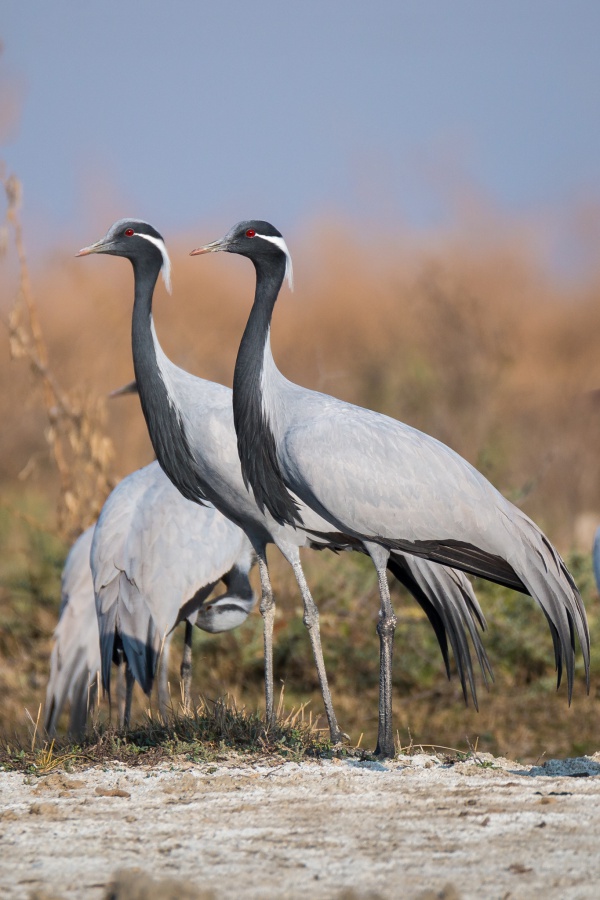Facts About Demoiselle crane
The demoiselle crane is a captivating bird species native to central Eurosiberia, ranging from the Black Sea through Mongolia and northeastern China. A smaller breeding population also resides in Turkey. These migratory birds journey to warmer climates during winter, either to Africa or the Indian subcontinent, depending on their place of origin. In India and Pakistan, they hold cultural significance and are endearingly referred to as "Koonj."
Demoiselle cranes are the smallest of all crane species. They measure between 85–100 cm in length, stand approximately 76 cm tall, and weigh around 2–3 kg. They present a striking appearance with a long white neck stripe and black feathers on their foreneck that extend down their chest.
These cranes are renowned for their loud, trumpeting calls and their elegant, dance-like courtship displays. They inhabit a variety of environments, including deserts and different types of grasslands, typically near water sources. Their migration is a challenge, as they face obstacles like fatigue, hunger, and predators, particularly when traversing the formidable Himalayan mountains. In places like Khichan, Rajasthan, India, local villagers feed these birds, resulting in large annual gatherings.
Despite the arduous migration, the demoiselle crane is listed as Least Concern on the IUCN Red List, indicating that they are not currently at significant risk of extinction. They are also protected under the Agreement on the Conservation of African-Eurasian Migratory Waterbirds (AEWA), which helps ensure their survival along their extensive migratory routes.

 Benin
Benin